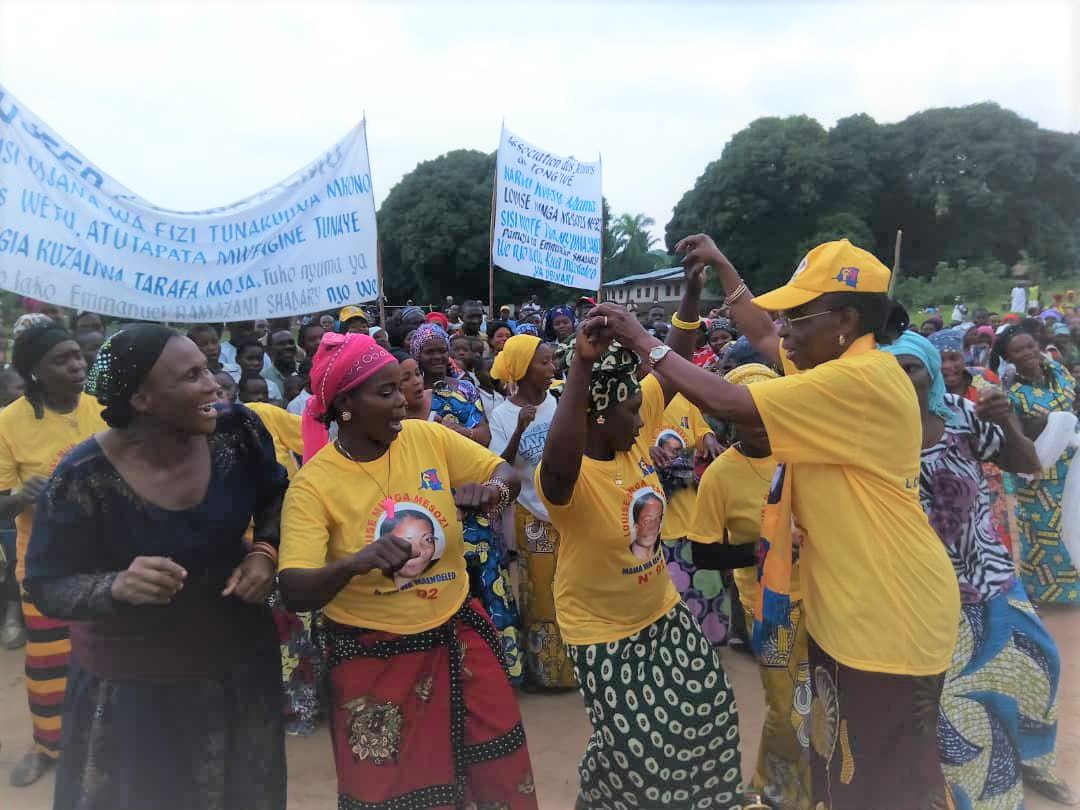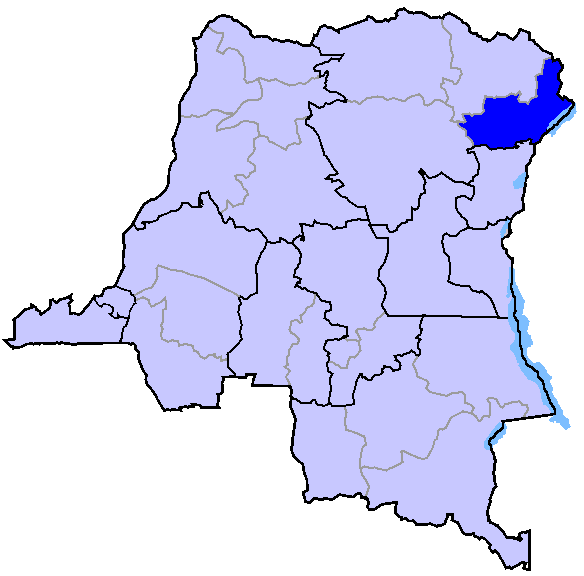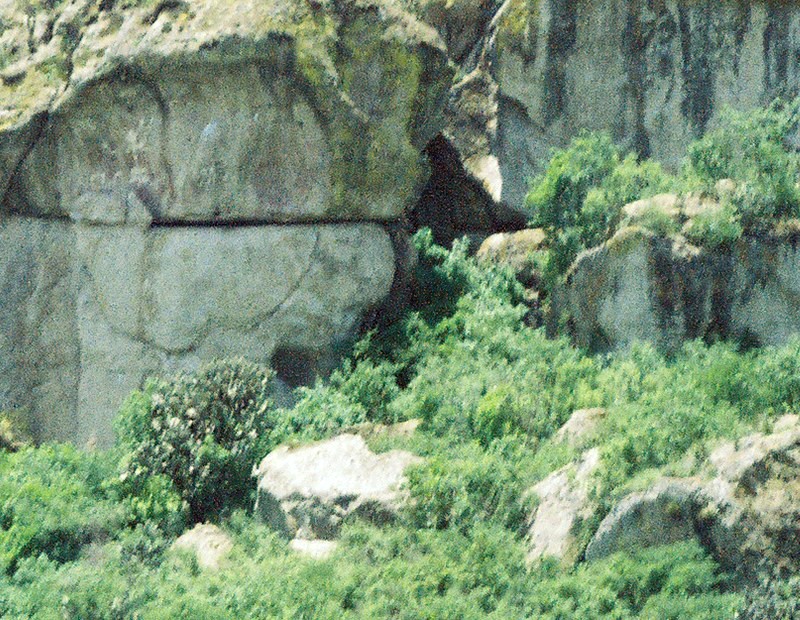|
Mutambala
Mutambala (or M'tambala) is a sector that constitutes one of the four sectors in the Fizi Territory of the South Kivu Province in the eastern part of the Democratic Republic of the Congo. Mutambala is situated near Lake Tanganyika, in the west by the Lulenge sector, in the north by the Tangani'a sector, and in the south by the Ngandja sector. It has a surface area of 777 km 2. The sector consists of five groupings (''groupements''), including the Basimukindja groupings (in the center), the Batombwe groupings (in the south), and the Babwari groupings (in the east). Agriculture is a significant economic activity in the region; it is revenue-generating for farmers. It is geared towards self-sufficiency but also generates profit through SOCODEFI, an agricultural organization that sells cassava to Baraka. Local food crops include cassava, palm oil, rice, maize, beans, banana, tomato, yam, peanut, sweet potato and sugarcane. In addition to agriculture, fishing constit ... [...More Info...] [...Related Items...] OR: [Wikipedia] [Google] [Baidu] |
Lake Tanganyika
Lake Tanganyika () is an African Great Lake. It is the second-oldest freshwater lake in the world, the second-largest by volume, and the second-deepest, in all cases after Lake Baikal in Siberia. It is the world's longest freshwater lake. The lake is shared among four countries— Tanzania, the Democratic Republic of the Congo (DRC), Burundi, and Zambia, with Tanzania (46%) and DRC (40%) possessing the majority of the lake. It drains into the Congo River system and ultimately into the Atlantic Ocean. Etymology "Tanganika" was the name of the lake that Henry Morton Stanley encountered when he was at Ujiji in 1876. The name first originated from the Bembe language when they arrived in South Kivu around the 7th century, they discovered the lake and started calling it “êtanga ‘ya’ni’â” which means “a big river” in their Bantu language. Stanley found also other names for the lake among different ethnic groups, like the Kimana, the Yemba and the Msaga. An al ... [...More Info...] [...Related Items...] OR: [Wikipedia] [Google] [Baidu] |
Lulenge
Lulenge is a Chiefdoms and sectors of the Democratic Republic of the Congo, sector in the Fizi Territory, South Kivu, Democratic Republic of the Congo, Democratic Republic of Congo. Lulenge is located in the vicinity of the Kiloba and Makena villages and has an altitude of 943 meters. Mining and agriculture are the region's most significant revenue-generating and economic sectors. Agricultural co-operatives function much more efficiently in Lulenge, and the Coopérative Business Centre Olive (CBCO) is the largest in the mining sector. The primary agricultural commodities are cassava, peanuts, beans, mushrooms, and rice. Aside from mining and agriculture, fishing is another source of revenue, with Lake Tanganyika situated in the eastern part of the territory. In addition, small enterprises are well-developed in the area. Since 2018, Lulenge has been in the throes of conflicts. The emergence of the Ngumino and Twiganeho militias in November 2021 has escalated tension between Banyam ... [...More Info...] [...Related Items...] OR: [Wikipedia] [Google] [Baidu] |
Chiefdoms And Sectors Of The Democratic Republic Of The Congo
Communes, chiefdoms and sectors of the Democratic Republic of the Congo are the third-level administrative divisions of the Democratic Republic of the Congo. Aketi Territory * Avuru-Duma Chiefdom * Avuru-Gatanga Chiefdom * Bondongola Chiefdom * Mabinza Chiefdom * Mobati-Boyele Chiefdom * Mongwandi Chiefdom * Gbandi Sector * Yoko Sector Ango Territory *Ezo Chiefdom * Mopoy Chiefdom *Ngindo Chiefdom * Sasa Chiefdom Aru Territory * Kakwa Chiefdom * Kaliko-Omi Chiefdom * Zaki Chiefdom Bafwasende Territory * Bafwandaka Sector * Bakumu d'Angumu Sector * Bakundumu Sector * Barumbi-Opienge Sector * Bekeni-Kondolole Sector * Bemili Sector Bagata Territory * Kidzweme Sector * Kwango-Kasai Sector * Kwilu-Ntobere Sector * Manzasay Sector * Wamba-Fatundu Sector Bagira Territory Bambesa Territory * Bakere Chiefdom * Bakete Chiefdom * Bokapo Chiefdom * Bokiba Chiefdom * Bulungwa Chiefdom * Makere Chiefdom *Mange Chiefdom * Mondwangali Chiefdom Banalia Te ... [...More Info...] [...Related Items...] OR: [Wikipedia] [Google] [Baidu] |
Fishing Industry
The fishing industry includes any industry or activity concerned with taking, culturing, processing, preserving, storing, transporting, marketing or selling fish or fish products. It is defined by the Food and Agriculture Organization as including recreational, subsistence and commercial fishing, and the related harvesting, processing, and marketing sectors.FAO Fisheries Section: Glossary''Fishing industry.''Retrieved 28 May 2008. The commercial activity is aimed at the delivery of fish and other seafood products for human consumption or as input factors in other industrial processes. The livelihood of over 500 million people in developing countries depends directly or indirectly on fisheries and aquaculture. The fishing industry is struggling with environmental and welfare issues, including overfishing and occupational safety. Additionally, the combined pressures of climate change, biodiversity loss and overfishing endanger the livelihoods and food security of a substant ... [...More Info...] [...Related Items...] OR: [Wikipedia] [Google] [Baidu] |
Mbuti People
The Mbuti people, or Bambuti, are one of several indigenous pygmy groups in the Congo region of Africa. Their languages are Central Sudanic languages and Bantu languages. Subgroups Bambuti are pygmy hunter-gatherers, and are one of the oldest indigenous people of the Congo region of Africa. The Bambuti are composed of bands which are relatively small in size, ranging from 15 to 60 people. The Bambuti population totals about 30,000 to 40,000 people. Many Batwa in various parts of the DRC call themselves Bambuti as well. There are three distinct subgroups: * The Sua (also Kango, or Mbuti), who speak a dialect (or perhaps two) of the language of a neighboring Bantu people, Bila. They are located centrally and are eponymous of the larger group. * The Efé, who speak the language of the neighboring Central Sudanic Lese. * The Asua, speakers of the Mangbetu (Central Sudanic) Asua language. Environment The Mbuti population live in the Ituri, a tropical rainforest coveri ... [...More Info...] [...Related Items...] OR: [Wikipedia] [Google] [Baidu] |
Hunting
Hunting is the human practice of seeking, pursuing, capturing, or killing wildlife or feral animals. The most common reasons for humans to hunt are to harvest food (i.e. meat) and useful animal products ( fur/ hide, bone/ tusks, horn/ antler, etc.), for recreation/ taxidermy (see trophy hunting), to remove predators dangerous to humans or domestic animals (e.g. wolf hunting), to eliminate pests and nuisance animals that damage crops/ livestock/ poultry or spread diseases (see varminting), for trade/tourism (see safari), or for ecological conservation against overpopulation and invasive species. Recreationally hunted species are generally referred to as the '' game'', and are usually mammals and birds. A person participating in a hunt is a hunter or (less commonly) huntsman; a natural area used for hunting is called a game reserve; an experienced hunter who helps organize a hunt and/or manage the game reserve is known as a gamekeeper. Many non-human anima ... [...More Info...] [...Related Items...] OR: [Wikipedia] [Google] [Baidu] |
Artisanal Fishing
Artisanal fishing (or traditional/subsistence fishing) consists of various small-scale, low-technology, low-capital, fishing practices undertaken by individual fishing households (as opposed to commercial fishing). Many of these households are of coastal or island ethnic groups. These households make short (rarely overnight) fishing trips close to the shore. Their produce is usually not processed and is mainly for local consumption. Artisan fishing uses traditional fishing techniques such as rod and tackle, fishing arrows and harpoons, cast nets, and small (if any) traditional fishing boats. For that reason, socio-economic status of artisanal fishing community has become an interest of the authorities in recent years. Artisan fishing may be undertaken for both commercial and subsistence reasons. It contrasts with large-scale modern commercial fishing practices in that it is often less wasteful and less stressful on fish populations than modern industrial fishing. Target 1 ... [...More Info...] [...Related Items...] OR: [Wikipedia] [Google] [Baidu] |
Maize
Maize ( ; ''Zea mays'' subsp. ''mays'', from es, maíz after tnq, mahiz), also known as corn ( North American and Australian English), is a cereal grain first domesticated by indigenous peoples in southern Mexico about 10,000 years ago. The leafy stalk of the plant produces pollen inflorescences (or "tassels") and separate ovuliferous inflorescences called ears that when fertilized yield kernels or seeds, which are fruits. The term ''maize'' is preferred in formal, scientific, and international usage as a common name because it refers specifically to this one grain, unlike ''corn'', which has a complex variety of meanings that vary by context and geographic region. Maize has become a staple food in many parts of the world, with the total production of maize surpassing that of wheat or rice. In addition to being consumed directly by humans (often in the form of masa), maize is also used for corn ethanol, animal feed and other maize products, such as corn starch a ... [...More Info...] [...Related Items...] OR: [Wikipedia] [Google] [Baidu] |
Sugarcane
Sugarcane or sugar cane is a species of (often hybrid) tall, perennial grass (in the genus ''Saccharum'', tribe Andropogoneae) that is used for sugar production. The plants are 2–6 m (6–20 ft) tall with stout, jointed, fibrous stalks that are rich in sucrose, which accumulates in the stalk internodes. Sugarcanes belong to the grass family, Poaceae, an economically important flowering plant family that includes maize, wheat, rice, and sorghum, and many forage crops. It is native to the warm temperate and tropical regions of India, Southeast Asia, and New Guinea. The plant is also grown for biofuel production, especially in Brazil, as the canes can be used directly to produce ethyl alcohol (ethanol). Grown in tropical and subtropical regions, sugarcane is the world's largest crop by production quantity, totaling 1.9 billion tonnes in 2020, with Brazil accounting for 40% of the world total. Sugarcane accounts for 79% of sugar produced globally (most of the rest is ma ... [...More Info...] [...Related Items...] OR: [Wikipedia] [Google] [Baidu] |
Sweet Potato
The sweet potato or sweetpotato ('' Ipomoea batatas'') is a dicotyledonous plant that belongs to the bindweed or morning glory family, Convolvulaceae. Its large, starchy, sweet-tasting tuberous roots are used as a root vegetable. The young shoots and leaves are sometimes eaten as greens. Cultivars of the sweet potato have been bred to bear tubers with flesh and skin of various colors. Sweet potato is only distantly related to the common potato (''Solanum tuberosum''), both being in the order Solanales. Although darker sweet potatoes are often referred to as "yams" in parts of North America, the species is not a true yam, which are monocots in the order Dioscoreales. Sweet potato is native to the tropical regions of the Americas. Of the approximately 50 genera and more than 1,000 species of Convolvulaceae, ''I. batatas'' is the only crop plant of major importance—some others are used locally (e.g., ''I. aquatica'' "kangkong"), but many are poisonous. The genus ''Ipomo ... [...More Info...] [...Related Items...] OR: [Wikipedia] [Google] [Baidu] |
Peanut
The peanut (''Arachis hypogaea''), also known as the groundnut, goober (US), pindar (US) or monkey nut (UK), is a legume crop grown mainly for its edible Seed, seeds. It is widely grown in the tropics and subtropics, important to both small and large commercial producers. It is classified as both a grain legume and, due to its high oil content, an oil crop. World annual production of shelled peanuts was 44 million tonnes in 2016, led by China with 38% of the world total. Atypically among legume crop plants, peanut pods develop underground (geocarpy) rather than above ground. With this characteristic in mind, the botanist Carl Linnaeus gave peanuts the specific epithet ''hypogaea'', which means "under the earth." The peanut belongs to the botanical Family (biology), family Fabaceae (or Leguminosae), commonly known as the legume, bean, or pea family. Like most other legumes, peanuts harbor symbiotic Nitrogen fixation, nitrogen-fixing bacteria in root nodules. The capacity to fi ... [...More Info...] [...Related Items...] OR: [Wikipedia] [Google] [Baidu] |








